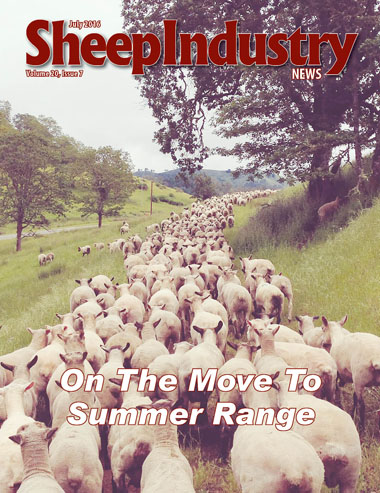This is a very good year for wool quality – plenty of grass in many parts of the country coupled with an open winter for many meant the wool stayed white, strong, clean and high yielding. Wool bellies were the best ever seen by one wool buyer.
In some western regions, wool was shorter than expected, however. Reportedly, wools shorter than staple length (3 inches) received about a 60-cent per lb. clean discount. The reasoning for the shorter wool is thought to be reduced nutrition as some flocks fed on sage, without access to snow-covered grass.
Wool prices this season are not record high, but still very good. U.S. wool prices saw some monthly softening in May except for mid- and broader microns in the Territory States, which gained.
The U.S. wool market was busy in May with 670,179 lbs. of wool traded on a clean basis and more than 400,000 lbs. sold greasy. The USDA Agricultural Marketing Service reported that a lot of the wool traded brought 80 to 85 percent of Australian wool and paint-free wool brought up to a 5 percent premium per lb. (5/6/16). USDA/AMS continued: Wools that contained high vegetable matter contaminants and shorter wools averaged 70 to 75 percent of Australian wool. Overall, wools traded were high yielding, a testament to a favorable winter for wool.
In the Fleece States (mostly Californian wools), wool prices averaged 1 to 6 percent lower monthly in May yet 4 to 14 percent higher year-on-year. Overall, wool yields in California were about 5 percent higher than last year due to improved pasture conditions. Twenty micron averaged $4.04 per lb. clean, 22 micron averaged $3.69 per lb. and 24 micron brought $3.22 per lb.
In the Territory States, wools saw mostly higher prices and up to 11 percent higher year-on-year. Nineteen micron averaged $4.42 per lb. clean, 21 micron averaged $4.00, 23 micron brought $3.87 per lb. and 25 micron brought $3.26 per lb. In Texas and New Mexico, wools saw some marginal monthly weakening with no comparison year-on-year due to lack of trades. Nineteen micron averaged $4.09 per lb. and 20 micron brought $4.06 per lb.
Looking ahead, the WTiN Wool Market Report stated that the market could hold at current strong rates due to the strong wool demand and because it is believed that the Aussie dollar won’t strengthen significantly against the U.S. dollar in June (6/6/16).


